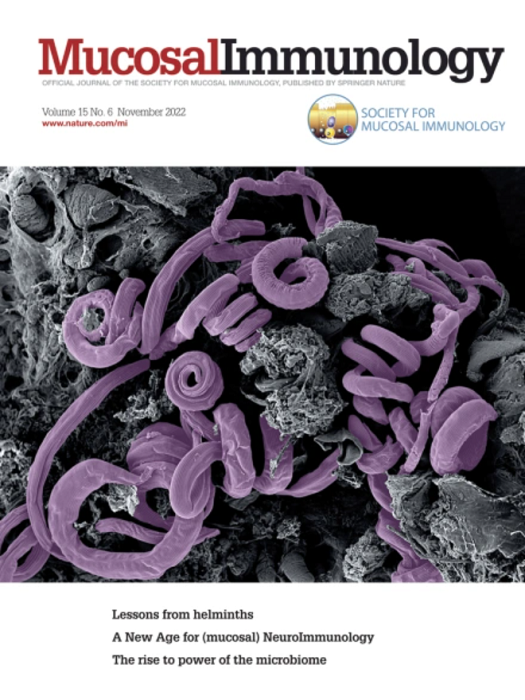Dynamic regulation of innate lymphoid cell development during ontogeny
IF 7.9
2区 医学
Q1 IMMUNOLOGY
引用次数: 0
Abstract
The helper-like ILC contains various functional subsets, such as ILC1, ILC2, ILC3 and LTi cells, mediating the immune responses against viruses, parasites, and extracellular bacteria, respectively. Among them, LTi cells are also crucial for the formation of peripheral lymphoid tissues, such as lymph nodes. Our research, along with others’, indicates a high proportion of LTi cells in the fetal ILC pool, which significantly decreases after birth. Conversely, the proportion of non-LTi ILCs increases postnatally, corresponding to the need for LTi cells to mediate lymphoid tissue formation during fetal stages and other ILC subsets to combat diverse pathogen infections postnatally. However, the regulatory mechanism for this transition remains unclear. In this study, we observed a preference for fetal ILC progenitors to differentiate into LTi cells, while postnatal bone marrow ILC progenitors preferentially differentiate into non-LTi ILCs. Particularly, this differentiation shift occurs within the first week after birth in mice. Further analysis revealed that adult ILC progenitors exhibit stronger activation of the Notch signaling pathway compared to fetal counterparts, accompanied by elevated Gata3 expression and decreased Rorc expression, leading to a transition from fetal LTi cell-dominant states to adult non-LTi ILC-dominant states. This study suggests that the body can regulate ILC development by modulating the activation level of the Notch signaling pathway, thereby acquiring different ILC subsets to accommodate the varying demands within the body at different developmental stages.
先天性淋巴细胞在本体发育过程中的动态调控
辅助性 ILC 包含多种功能亚群,如 ILC1、ILC2、ILC3 和 LTi 细胞,它们分别介导针对病毒、寄生虫和细胞外细菌的免疫反应。其中,LTi 细胞对淋巴结等外周淋巴组织的形成也至关重要。我们和其他研究人员的研究表明,胎儿 ILC 细胞池中 LTi 细胞的比例很高,出生后这一比例会明显下降。相反,非LTi ILC的比例在出生后会增加,这与胎儿期需要LTi细胞介导淋巴组织的形成以及出生后需要其他ILC亚群对抗各种病原体感染是相对应的。然而,这种转变的调控机制仍不清楚。在这项研究中,我们观察到胎儿期的 ILC 祖细胞更倾向于分化成 LTi 细胞,而出生后的骨髓 ILC 祖细胞则更倾向于分化成非 LTi ILC。特别是,这种分化转变发生在小鼠出生后的第一周内。进一步的分析表明,与胎儿ILC祖细胞相比,成年ILC祖细胞表现出更强的Notch信号通路激活,伴随着Gata3表达的升高和Rorc表达的降低,导致从胎儿LTi细胞主导状态过渡到成年非LTi ILC主导状态。这项研究表明,机体可以通过调节Notch信号通路的激活水平来调节ILC的发育,从而获得不同的ILC亚群,以适应机体在不同发育阶段的不同需求。
本文章由计算机程序翻译,如有差异,请以英文原文为准。
求助全文
约1分钟内获得全文
求助全文
来源期刊

Mucosal Immunology
医学-免疫学
CiteScore
16.60
自引率
3.80%
发文量
100
审稿时长
12 days
期刊介绍:
Mucosal Immunology, the official publication of the Society of Mucosal Immunology (SMI), serves as a forum for both basic and clinical scientists to discuss immunity and inflammation involving mucosal tissues. It covers gastrointestinal, pulmonary, nasopharyngeal, oral, ocular, and genitourinary immunology through original research articles, scholarly reviews, commentaries, editorials, and letters. The journal gives equal consideration to basic, translational, and clinical studies and also serves as a primary communication channel for the SMI governing board and its members, featuring society news, meeting announcements, policy discussions, and job/training opportunities advertisements.
 求助内容:
求助内容: 应助结果提醒方式:
应助结果提醒方式:


